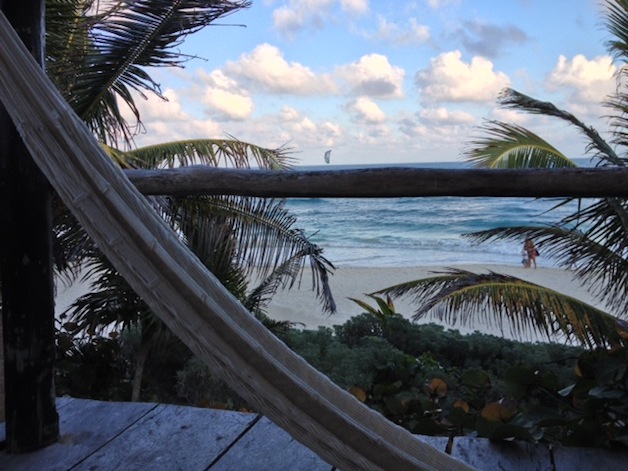
We have all heard about pop-ups by now, how could we have not. Ten years since this trend first appeared it has virtually taken over every industry, whether it’s pop-up retail shops or entire malls, pop-up restaurants, art galleries, bars or night clubs. So why not a pop-up hotel? That must have been the question Claus Sendlinger, CEO of Berlin based hotel affiliation Design Hotels™ was asking himself one morning in 2010 while swimming in Tulum Bay in Mexico.
The result, Papaya Playa Project, popped up in Tulum in January 2011. Design Hotels™s’ creative team refurbished 85 small cabanas and created a rough-luxe resort for design-conscious travellers, spread out over a 900 meter stretch of virgin beach facing the turquoise waters of the Caribbean Sea. Adding the creative concepts of some of the most innovative heads in entertainment, food, and design and the project was born. Needless to say, what pops up, also disappears again and in May the hotel closed its doors (only to make room for a Pop-up Ashram). Following the success of the hotel concept, Papaya Playa is now in its first season as a permanent property.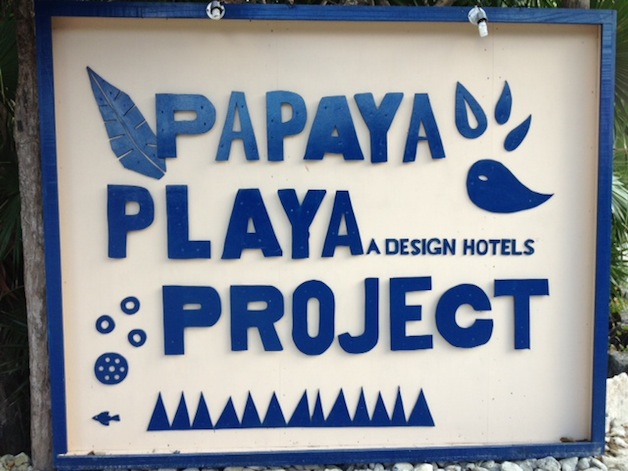 Why Tulum?
Why Tulum?
Site of a Pre-Columbian walled city built by the Mayans on the East Coast of Mexico’s Yucatan peninsula, Tulum is one of the best-preserved coastal Maya sites (spectacular ruins overlook the beach from 12-meter (39 ft) high cliffs). Besides that, Tulum managed to maintain a charm I have not seen anywhere else. It’s only 90 minutes to Cancun but couldn’t be further from the large tourism complexes, multi storey hotel developments and mass tourism properties found there. Here it’s all about rustic beach cabanas, traditional casistas, and cosy boutique hotels. A creative vibe and somewhat magical aura also add to the flair. Furthermore, it is not only considered one of the best beach destinations in the world but also a leader in sustainable and ecological tourism, a place with its own green identity. In short: it’s the perfect beach community!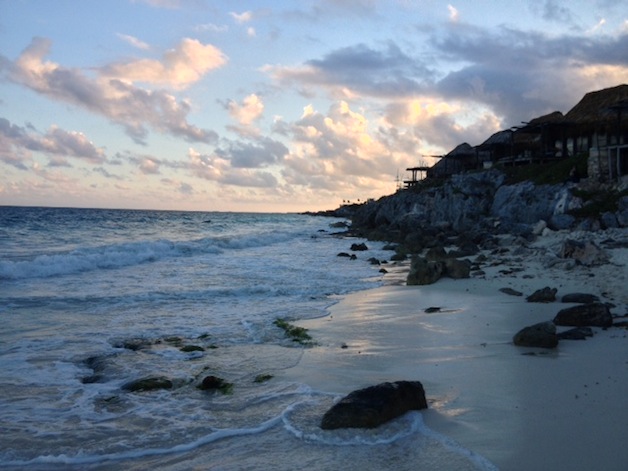 No wonder Claus Sendlinger moved here with his family in 2010 and now enjoys his life oscillating between Berlin and his Tulum residence, which is nestled into the brushwood, just steps from the beach. It’s the “fusion of nature, leisure and spirituality” that drew him here, as he explains over an early morning coffee in the amphitheater style restaurant before going for a swim.
No wonder Claus Sendlinger moved here with his family in 2010 and now enjoys his life oscillating between Berlin and his Tulum residence, which is nestled into the brushwood, just steps from the beach. It’s the “fusion of nature, leisure and spirituality” that drew him here, as he explains over an early morning coffee in the amphitheater style restaurant before going for a swim.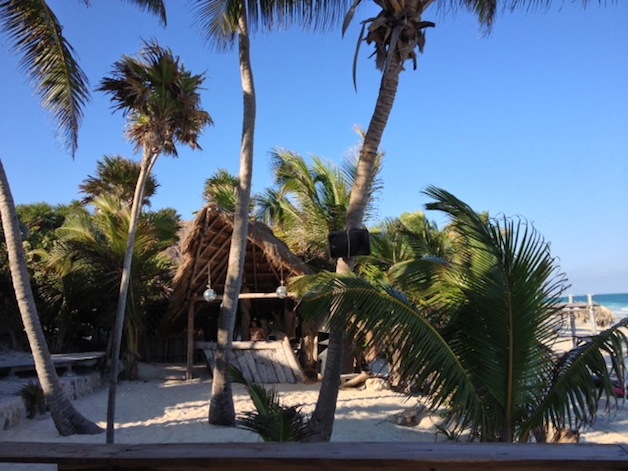
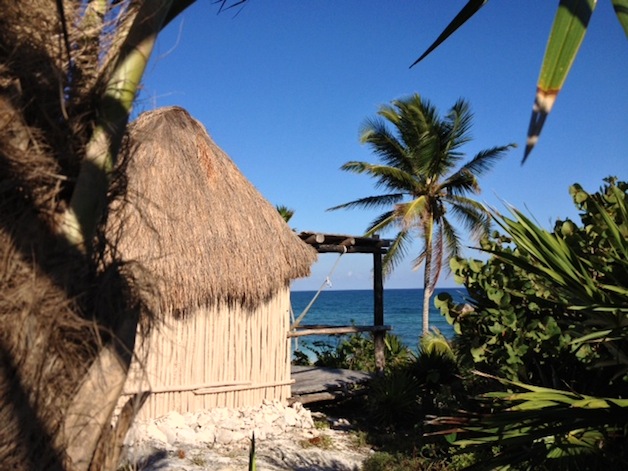
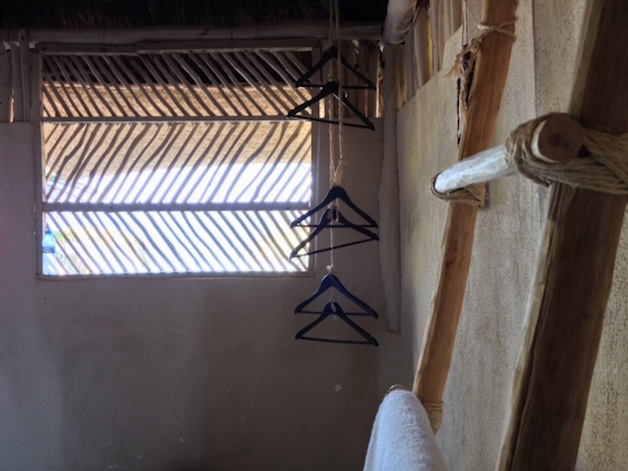 Papaya Playa fuses all that together: set among the palm trees are the simple, yet stylish cabanas, either with private or shared bathrooms, but without A/C or electric outlets. No windows either, but wooden frames letting in the daylight and allowing clapotis, the sound of the waves, create a meditative background noise at night. There are quirky design elements and plenty of local flavours; it’s the kind of place a cool Robinson Crusoe would have built and I can’t help but also think of Alex Garland’s The Beach. Leisure options are ample (yoga, kite surfing and diving are available right on the beach) whilst the resident shaman will take care of your spiritual experience.
Papaya Playa fuses all that together: set among the palm trees are the simple, yet stylish cabanas, either with private or shared bathrooms, but without A/C or electric outlets. No windows either, but wooden frames letting in the daylight and allowing clapotis, the sound of the waves, create a meditative background noise at night. There are quirky design elements and plenty of local flavours; it’s the kind of place a cool Robinson Crusoe would have built and I can’t help but also think of Alex Garland’s The Beach. Leisure options are ample (yoga, kite surfing and diving are available right on the beach) whilst the resident shaman will take care of your spiritual experience.
Sure, Papaya Playa has its edges and there are some things which still need improvement but do they really matter that much here? For once I shall not look at the details but the idea, the concept, the project as a whole: it’s far more than just a hotel, it’s a wonderful community, creative playground, and haven for hoboism. And that’s why Papaya Playa is Tulum and Tulum is Papaya Playa.
The community and neighbourhood approach plays a fundamental role in the Design Hotels™ culture: a great hotel will always be deeply rooted in their neighbourhood, both to ensure guests feel a sense of place and authenticity but also as a responsibility towards supporting their community – Design Hotels™ have been pioneering this idea from the start (see also their 2012 yearbook on this).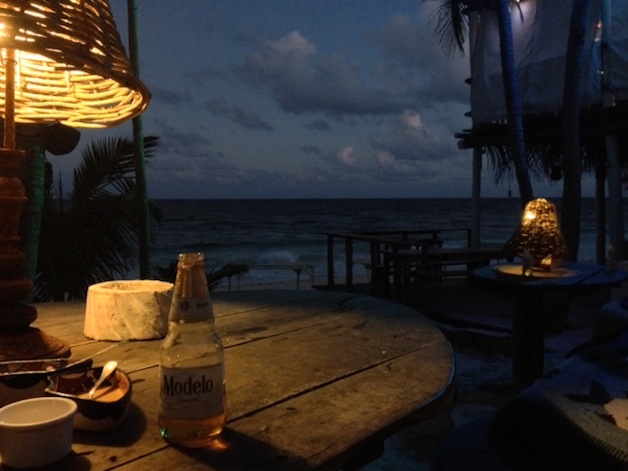
The New Sublimity
Yet another trend, although a fairly new one. I first heard about it during a presentation by London’s Future Laboratory in Berlin last year. It explains how consumers these days are looking to more ‘grounded’ ways in search for meaning, mindfulness and an emotional reboot; how it’s about simple pleasures instead of gold taps.
Look no further.
Comments are closed.